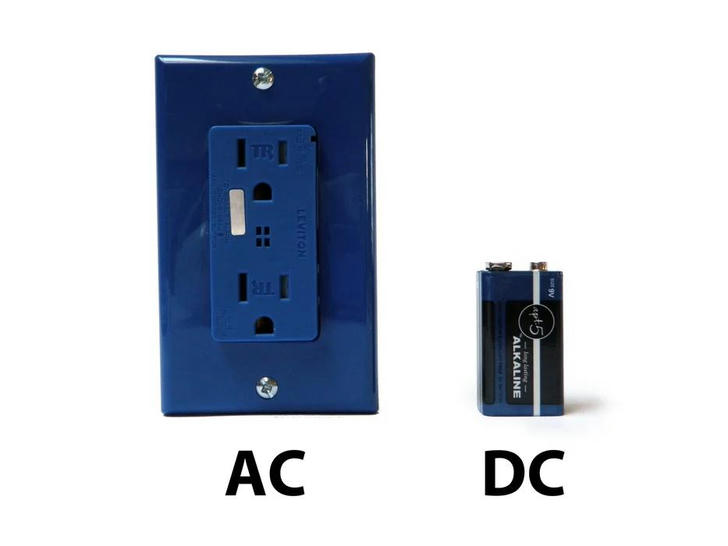Basic Electronics for Beginners in 20 Steps
Step 1: Electricity

There are two primary types of electrical signals: alternating current (AC) and direct current (DC).
• Alternating Current (AC): In AC, the direction in which electricity flows is constantly changing. Essentially, the current alternates direction. The rate at which this reversal occurs is measured in Hertz (Hz), which represents the number of reversals per second. For example, when you hear that the power supply in the U.S. is 60 Hz, it means the current changes direction 120 times per second (twice per cycle).
• Direct Current (DC): In DC, electricity flows in only one direction, from the power source to the ground. There is always a positive voltage and a ground (0V) voltage in this setup. You can test this by measuring a battery with a multimeter.
Electricity is typically described in terms of voltage and current. Voltage is measured in volts (V), while current is measured in amperes (amps). For instance, a new 9V battery will have a voltage of 9V and can provide a current of about 500mA (milliamps).
Electricity can also be discussed in terms of resistance and watts. We'll touch on resistance in the next step, but we won't go too deep into watts. As you explore electronics further, you'll encounter components rated in watts. It's important never to exceed a component's wattage rating, but luckily, you can easily calculate the wattage of your DC power supply by multiplying the voltage by the current.
Most basic electronic circuits use DC electricity, so all further discussions will focus on DC power.
